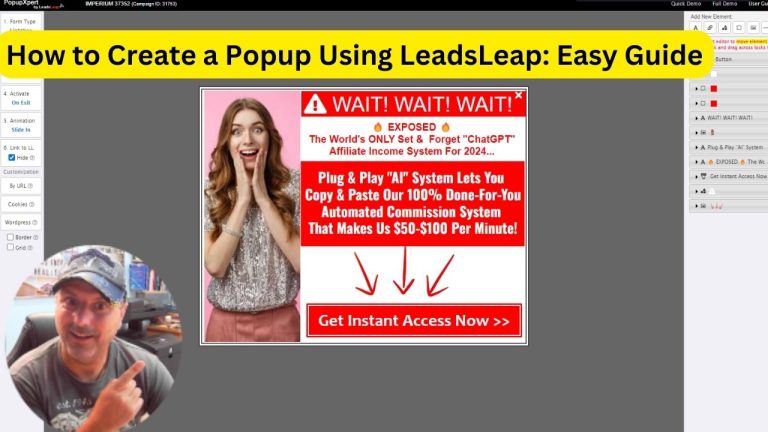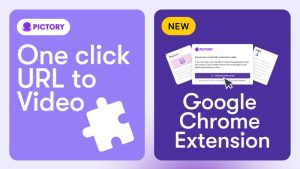In der schnelllebigen Welt des digitalen Marketings kann es eine Herausforderung sein, die Aufmerksamkeit Ihrer Zielgruppe zu gewinnen. Richtig eingesetzte Popups können ein wirkungsvolles Marketinginstrument sein und Engagement, Conversion-Raten und den Gesamterfolg Ihrer Kampagne deutlich steigern. Dieser Artikel untersucht die zentrale Rolle ansprechender und fesselnder Popups in Ihrer Marketingkampagne und bietet Einblicke in Best Practices für deren effektive Umsetzung.
Die Macht der Popups
Popups sind kleine Fenster, die auf einer Webseite erscheinen, um in der Regel die Aufmerksamkeit des Besuchers zu erregen und ihn zu einer bestimmten Aktion aufzufordern. Trotz anfänglicher Skepsis aufgrund ihres aufdringlichen Charakters haben sich gut gestaltete Popups als äußerst effektiv erwiesen, um Conversions zu fördern. Hier sind die Gründe:
- Sofortiger BlickfangPopups lassen sich kaum ignorieren. Sobald sie erscheinen, fesseln sie die Aufmerksamkeit des Nutzers und sind somit ein ideales Tool für die Übermittlung wichtiger Nachrichten oder Angebote.
- Lead-GenerierungPopups dienen vor allem dazu, E-Mail-Adressen zu sammeln und eine Mailingliste aufzubauen. Durch das Anbieten wertvoller Gegenleistungen, wie z. B. eines Rabatts oder eines kostenlosen E-Books, können Popups Besucher effektiv in Leads umwandeln.
- Verbesserte BenutzererfahrungEntgegen der landläufigen Meinung können Popups, wenn sie richtig eingesetzt werden, das Benutzererlebnis verbessern. Kontextbezogene und zum richtigen Zeitpunkt platzierte Popups können Benutzer durch die Website führen, ihnen helfen, das Gesuchte zu finden oder sie mit relevanten Inhalten bekannt zu machen.
- Höhere KonversionsratenStudien haben gezeigt, dass Popups die Konversionsraten durchschnittlich um bis zu 9,281 TP3T steigern können. Dieser deutliche Anstieg ist auf die Unmittelbarkeit und Sichtbarkeit der Popup-Nachricht zurückzuführen.
Best Practices für ansprechende Popups
Um das volle Potenzial von Popups auszuschöpfen, ist eine sorgfältige Gestaltung unerlässlich. Hier sind einige Best Practices, die Sie beachten sollten:
- Zeitpunkt und Platzierung: Die Wirksamkeit eines Popups hängt maßgeblich davon ab, wann und wo es erscheint. Beispielsweise können Exit-Intent-Popups, die erscheinen, wenn ein Nutzer die Website verlassen möchte, potenzielle Leads erfassen, die sonst verloren gehen könnten.
- Klarer und überzeugender CTA: Ein starker Call-to-Action (CTA) ist entscheidend. Der CTA sollte klar, prägnant und überzeugend sein und die Nutzer dazu anregen, sofort die gewünschte Aktion auszuführen.
- Optisch ansprechendes DesignEin attraktives Design kann Ihr Popup ansprechender machen. Verwenden Sie auffällige Grafiken, achten Sie jedoch darauf, dass sie zur Ästhetik Ihrer Marke passen, um ein einheitliches Erscheinungsbild zu gewährleisten.
- Personalisierung: Personalisierte Popups basierend auf Benutzerverhalten und -präferenzen können das Engagement deutlich steigern. Durch die Anpassung des Popup-Inhalts an die Interessen des Benutzers werden diese relevanter und effektiver.
- Mobile OptimierungDa ein erheblicher Teil des Webverkehrs von Mobilgeräten stammt, ist es wichtig, dass Ihre Popups für Mobilgeräte optimiert sind. Sie sollten reaktionsschnell sein und auf kleineren Bildschirmen nicht stören.
- Wertversprechen: Machen Sie deutlich, was der Nutzer durch die Interaktion mit dem Popup erhält. Ob Rabatt, exklusiver Inhalt oder eine kostenlose Testversion – das Wertversprechen sollte klar und verlockend sein.
Fallstudien: Erfolgreiche Popup-Kampagnen
Um die Wirkung ansprechender Popups zu verstehen, schauen wir uns einige erfolgreiche Fallstudien an:
- Sleeknote: Ein E-Commerce-Shop nutzte das Popup-Tool von Sleeknote, um ein Exit-Intent-Popup mit einem Rabatt von 10% zu erstellen. Dieses einfache Popup führte zu einer Steigerung der Conversion-Rate um 15%.
- Neil Patel: Der renommierte Marketingexperte Neil Patel nutzt Popups auf seiner Website, um kostenlose Ressourcen anzubieten und Leads zu generieren. Durch seinen strategischen Einsatz von Popups konnte er eine umfangreiche E-Mail-Liste aufbauen, die er für seine Marketingkampagnen nutzt.
- ShopifyShopify implementierte ein zeitgesteuertes Popup auf seinem Blog, das den Lesern nach einer bestimmten Verweildauer auf der Seite einen kostenlosen Leitfaden anbot. Dieser Ansatz führte zu einer deutlichen Steigerung der Lead-Generierung.
Schlussfolgerung
Die Einbindung ansprechender und fesselnder Popups in Ihre Marketingkampagne kann Ertrag Beeindruckende Ergebnisse. Richtig eingesetzt, erregen Popups nicht nur die Aufmerksamkeit, sondern fördern auch Conversions, verbessern das Nutzererlebnis und fördern die Lead-Generierung. Indem Sie Best Practices wie Timing, Personalisierung und einen klaren Mehrwert beachten, können Sie die Wirkung von Popups nutzen, um Ihre Marketingziele zu erreichen.
Da sich das digitale Marketing ständig weiterentwickelt, spielen Popups weiterhin eine wichtige Rolle. Nutzen Sie dieses dynamische Tool und erleben Sie, wie die Leistung Ihrer Kampagne neue Höhen erreicht.











